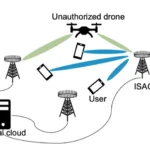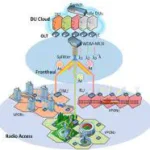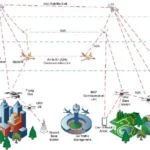Cloud and AI Native Network Architectures
Introduction
Cloud and AI Native Network Architectures research area focuses on the development of advanced communication architectures and technologies to pave the way for the next generation of mobile networks. This research area explores innovative approaches to optimize the utilization of processing, optical, radio, and storage resources, with a focus on Virtual Centralized Radio Access Network (V-CRAN), machine learning-driven solutions, softwarization, cloudification, and densification.
1. V-CRAN (Virtual Centralized Radio Access Network)
V-CRAN is a revolutionary architecture that centralizes the baseband processing of multiple base stations in a data center, enabling more efficient resource allocation and management. Research in this area aims to optimize jointly processing, optical, radio, and storage resources to enhance the performance and scalability of V-CRAN systems.
2. Machine Learning Agents for Virtual Base Stations Formation
Machine learning techniques are utilized to form virtual base stations (BSs) dynamically, adapting to changing network conditions and user demand. These machine learning agents analyze network data in real-time to optimize resource allocation, minimize interference, and enhance overall network efficiency.
3. Softwarization
4. Cloudification
5. Densification
Densification involves the deployment of a dense network of small cells to increase network capacity and coverage, particularly in urban and high-traffic areas. Research initiatives in densification focus on optimizing small cell placement, interference management, and spectrum utilization to support high-density network deployments and meet the growing demand for wireless connectivity.
Research Initiatives
- Resource Optimization: Developing algorithms and methodologies to optimize jointly processing, optical, radio, and storage resources in V-CRAN architectures, ensuring efficient resource utilization and improved network performance.
- Dynamic Base Station Formation: Implementing machine learning agents capable of dynamically forming virtual base stations based on real-time network conditions and user demand, enhancing flexibility and scalability in mobile network deployments.
- SDN and NFV: Investigating software-defined networking (SDN) and network function virtualization (NFV) technologies to support network softwarization and cloudification, enabling agile and efficient network management and service delivery.
- Small Cell Deployment: Studying strategies for small cell deployment and densification to enhance network capacity and coverage in urban and high-traffic areas, addressing the challenges of interference management and spectrum scarcity.





